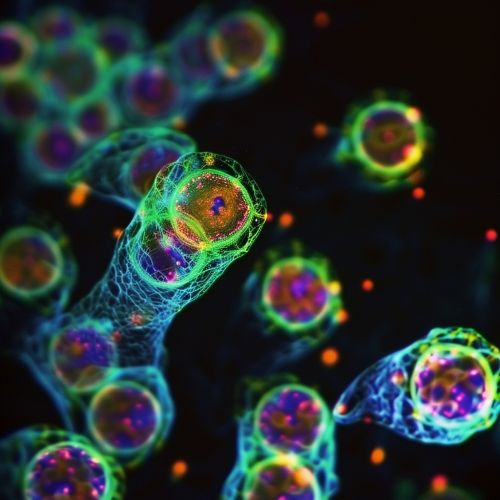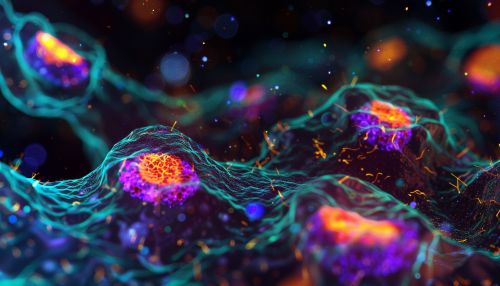Optical Microscopy
Introduction
Optical microscopy, also known as light microscopy, is a technique used to observe small objects that are not visible to the naked eye. This method employs visible light and a system of lenses to magnify images of small samples. Optical microscopy has a wide range of applications in various fields such as biology, materials science, and medical diagnostics. This article delves into the principles, types, techniques, and applications of optical microscopy, providing a comprehensive understanding of this essential scientific tool.
Principles of Optical Microscopy
Optical microscopy relies on the principles of light interaction with matter. The fundamental components of an optical microscope include a light source, condenser lens, objective lens, and ocular lens (eyepiece). The light source illuminates the sample, and the condenser lens focuses the light onto the specimen. The objective lens collects the light that passes through or is reflected by the specimen and creates an enlarged image. This image is further magnified by the ocular lens for observation.
Resolution and Magnification
The resolution of an optical microscope is defined as the ability to distinguish two closely spaced points as separate entities. It is primarily determined by the wavelength of light used and the numerical aperture of the objective lens. The Abbe diffraction limit, given by Ernst Abbe, states that the resolution (d) is approximately equal to λ/2NA, where λ is the wavelength of light and NA is the numerical aperture.
Magnification, on the other hand, is the process of enlarging the apparent size of an object. It is the product of the magnifications of the objective and ocular lenses. However, magnification without adequate resolution does not provide useful information.
Types of Optical Microscopes
Optical microscopes can be broadly classified into several types based on their design and functionality:
Brightfield Microscopy
Brightfield microscopy is the most common type of optical microscopy. It involves illuminating the specimen with white light, and the contrast in the image is generated by the absorption of light by the sample. This technique is suitable for observing stained or naturally pigmented specimens.
Darkfield Microscopy
In darkfield microscopy, the specimen is illuminated with light that does not enter the objective lens directly. Instead, only scattered light from the specimen reaches the objective, creating a bright image on a dark background. This technique enhances the contrast of transparent and unstained specimens.
Phase Contrast Microscopy
Phase contrast microscopy is used to observe transparent specimens that do not absorb light but alter its phase. This technique converts phase shifts in light passing through the specimen into changes in brightness, enhancing the contrast of the image. It is particularly useful for observing live cells and tissues.
Differential Interference Contrast (DIC) Microscopy
DIC microscopy, also known as Nomarski microscopy, uses polarized light and differential interference to produce high-contrast images of transparent specimens. This technique provides a pseudo-3D effect, making it useful for observing fine details in live cells and tissues.
Fluorescence Microscopy
Fluorescence microscopy involves the use of fluorescent dyes or proteins that emit light when excited by specific wavelengths. The emitted light is collected to form an image, allowing the observation of specific structures or molecules within a specimen. This technique is widely used in biological research for studying cellular processes and molecular interactions.


Confocal Microscopy
Confocal microscopy is an advanced form of fluorescence microscopy that uses a laser to illuminate the specimen and a pinhole to eliminate out-of-focus light. This technique provides high-resolution, three-dimensional images of specimens, making it ideal for detailed structural analysis.
Techniques in Optical Microscopy
Various techniques can be employed in optical microscopy to enhance image quality and extract specific information from specimens.
Staining
Staining involves the use of dyes to enhance the contrast of specimens. Different stains can bind to specific cellular components, allowing the visualization of structures such as nuclei, mitochondria, and cell membranes. Common stains include hematoxylin and eosin (H&E), Gram stain, and fluorescent dyes.
Immunohistochemistry
Immunohistochemistry (IHC) is a technique that uses antibodies to detect specific proteins within a specimen. The antibodies are labeled with enzymes or fluorescent dyes, allowing the visualization of the target proteins. IHC is widely used in medical diagnostics and research to study protein expression and localization.
Live-Cell Imaging
Live-cell imaging involves observing living cells over time to study dynamic processes such as cell division, migration, and signaling. This technique often employs fluorescence microscopy and time-lapse imaging to capture real-time changes in cellular behavior.
Super-Resolution Microscopy
Super-resolution microscopy techniques, such as STED (Stimulated Emission Depletion) and PALM (Photoactivated Localization Microscopy), break the diffraction limit of conventional optical microscopy. These techniques provide higher resolution images, allowing the observation of molecular structures at the nanoscale.
Applications of Optical Microscopy
Optical microscopy has a wide range of applications across various scientific disciplines.
Biological Research
In biological research, optical microscopy is used to study the structure and function of cells, tissues, and organisms. Techniques such as fluorescence microscopy and live-cell imaging are essential for investigating cellular processes, protein interactions, and genetic expression.
Medical Diagnostics
Optical microscopy plays a crucial role in medical diagnostics. Pathologists use light microscopes to examine tissue samples and identify abnormalities such as cancerous cells. Techniques like immunohistochemistry and fluorescence in situ hybridization (FISH) are used to detect specific biomarkers and genetic alterations.
Materials Science
In materials science, optical microscopy is used to analyze the microstructure of materials. This includes studying the grain structure of metals, the morphology of polymers, and the surface characteristics of ceramics. Polarized light microscopy is particularly useful for examining anisotropic materials such as crystals and fibers.
Forensic Science
Forensic scientists use optical microscopy to analyze trace evidence such as hair, fibers, and glass fragments. The high magnification and resolution provided by light microscopes allow for detailed examination and comparison of forensic samples.
Limitations of Optical Microscopy
Despite its widespread use, optical microscopy has certain limitations. The resolution is constrained by the diffraction limit, preventing the observation of structures smaller than approximately 200 nanometers. Additionally, the depth of field is limited, making it challenging to obtain clear images of thick specimens. Techniques such as confocal microscopy and super-resolution microscopy have been developed to address some of these limitations.
Conclusion
Optical microscopy is a fundamental tool in scientific research and diagnostics, providing valuable insights into the microscopic world. Advances in microscopy techniques continue to enhance our ability to observe and understand complex biological and material systems. As technology progresses, optical microscopy will remain an indispensable technique in the scientific community.
